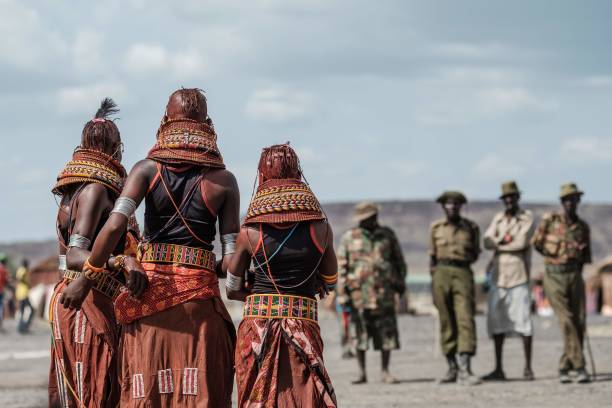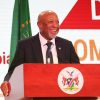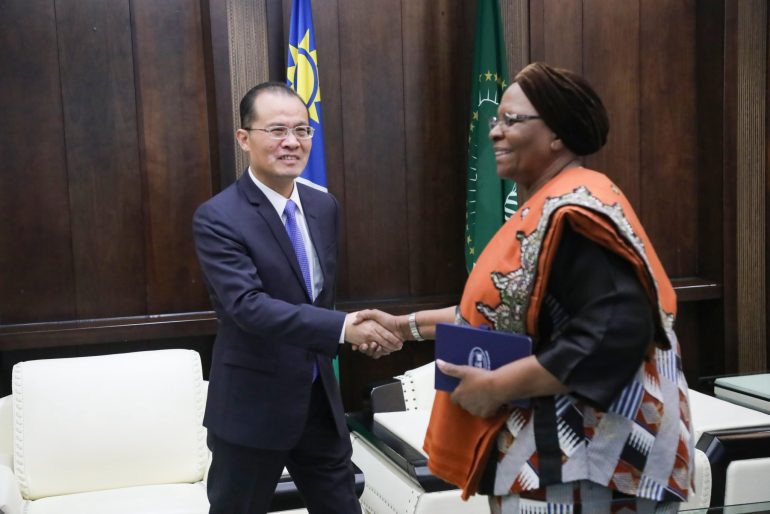Omanyano ovanhu koikundaneki yomalungula kashili paveta, Commisiner Sakaria takunghilile
Veronika Haulenga
Omanyano ovanhu koikundaneki yomalungula kashili paveta, Commisiner Sakaria takunghilile
Veronika Haulenga
Listeners:
Top listeners:
-
play_arrow
Omanyano ovanhu koikundaneki yomalungula kashili paveta, Commisiner Sakaria takunghilile Veronika Haulenga
30 January-6 February 2025 Weekly Economics Wrap: Tourism, Telecommunications, and Global Economic Trends


The local hospitality industry in Namibia is undergoing a significant shift as several major hotels transition from fixed rates to dynamic pricing. This move, influenced by international trends and increasing operational costs, has raised concerns about the impact on domestic tourism, already facing economic challenges. A recent survey by The Brief revealed that fluctuating rates could affect local tourism, making it difficult for many Namibians to access affordable accommodations. This trend may force domestic travelers to seek alternative options, potentially hindering the growth of local tourism.
In other local news, the Namibian government is in discussions with the International Finance Corporation (IFC) for an investment of over N$885 million (around US$50 million) to enhance the country’s telecommunications and digital infrastructure. This five-year investment, aligned with the newly launched Country Partnership Framework, aims to drive digital transformation and foster economic growth in the country. If the deal goes through, it will mark a significant step forward in improving Namibia’s connectivity and digital capabilities.
Meanwhile, in South Africa, the local economy has faced some challenges. The South African rand gained ground last Friday, boosted by stronger precious metal prices and the local central bank’s hawkish stance during its recent monetary policy announcement. By early morning, the rand traded at 18.56 to the US dollar, about 0.3% stronger than its previous close. However, the country’s private sector faced a sharp contraction in January, as the S&P Global South Africa Purchasing Managers’ Index (PMI) dropped to 47.4, its lowest level since July 2021. This decline reflects lower sales and a significant drop in new orders, especially in the service sector, indicating ongoing economic challenges for South Africa.
Across the African continent, the Kenyan shilling weakened against the US dollar, trading at 129.50 per dollar by the end of last week. This decline, as reported by Reuters, highlights ongoing currency pressures in East Africa.
In Mozambique, TotalEnergies CEO Patrick Pouyanne announced that financing for the company’s US$20 billion LNG project is expected to be approved soon. The project, which is crucial for the country’s energy sector, is awaiting loan re-approvals from the US, UK, and Dutch export credit agencies. Once funding is secured, the force majeure on the project will be lifted, and development will proceed.
Globally, the US stock market rebounded from a sharp sell-off earlier in the week, but concerns over President Trump’s tariff plans put pressure on markets. Trump confirmed tariffs on Canada, Mexico, and China, set to take effect by February 4, which are expected to escalate trade tensions between the world’s largest economies. Meanwhile, in Hong Kong, investors showed strong optimism as the Hang Seng Index surged more than 3% during the second trading day of the Year of the Snake, with the Hang Seng Tech Index rising over 5%.
Tensions between the US and China intensified after the US Postal Service announced it would suspend parcels from China and Hong Kong, impacting e-commerce giants like Temu and Shein. China responded by accusing the US of “suppression,” adding to the already strained relationship between the two countries.
Financial Indicators:
- The Namibia dollar trades at 18.56 to the US$, 19.31 to the Euro, and 23.20 to the Pound.
- Gold is trading at 2,865 dollars 21 cents per fine ounce.
- Brent crude stands at 76.20 per barrel.
- 1 Bitcoin costs 1,806,625 dollars 03 cents.
Written by: Leonard Witbeen
cryptocurrency currency Digital Infrastructure Economic Growth Finance Global Economics Hang Seng Hospitality Inflation Kenya Mozambique Namibia PMI rand South Africa Stock Market tariffs TotalEnergies Tourism US Dollar US-China Trade
Similar posts
FNB Namibia scoops award for Best International Private Bank for 3rd consecutive year
(Contributed Photo) By: Hertha Ekandjo FNB Namibia has been named the Best International Private Bank for the third consecutive year at the Euromoney Private Banking Awards held in London. This recognition solidifies the bank's position as a global private banking and wealth management leader. Euromoney's Private Banking Awards, now in […]
Windhoek Weather
Most popular

Mbumba signs off new benefits for retired political office bearers

Former FNB employee arrested after defraud pensioner off N$215, 000

Namdia Heist: More questions, lots of confusion

Omuhwahwameki Michael okuunganeka oshikonga shoku patitha oostola dho Rani moshilongo ashihe.

Windhoek woman loses N$60,000 to fraudsters
Copyright 2025 Future Media (Pty) Ltd | Website by Digital Platforms
Tel: +264 83 000 1000 | Email: news@futuremedia.com.na




